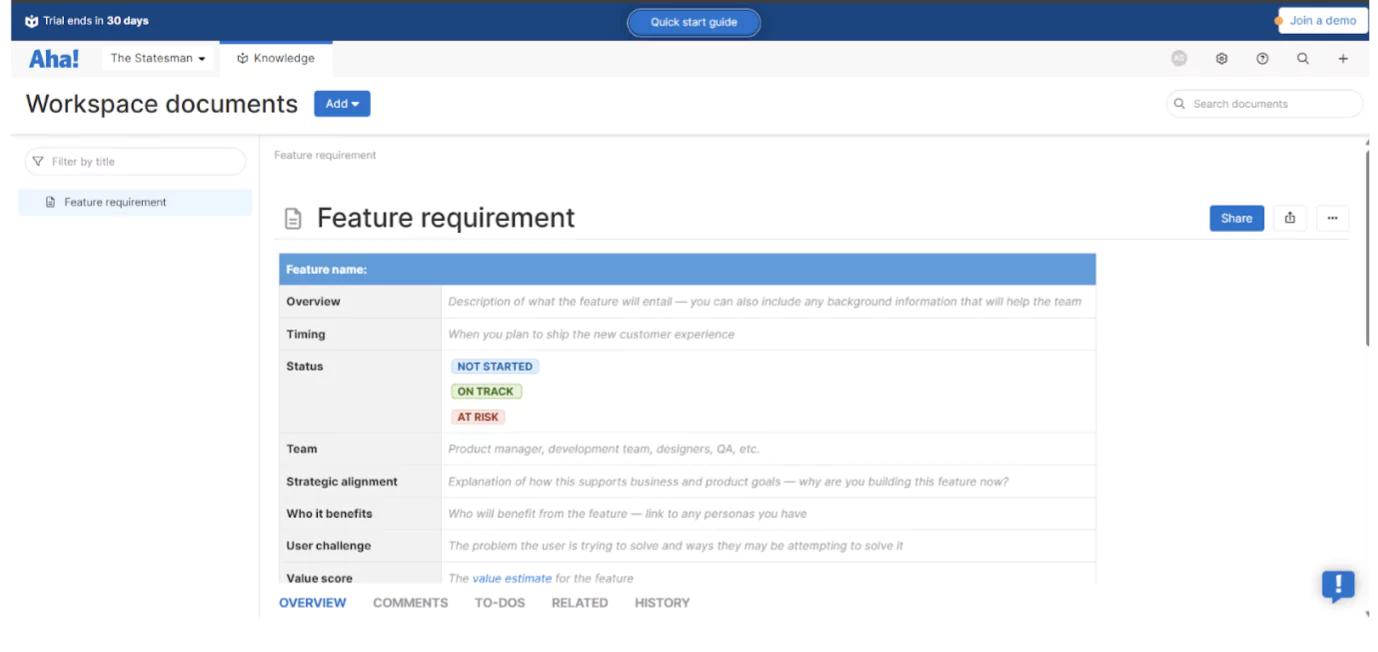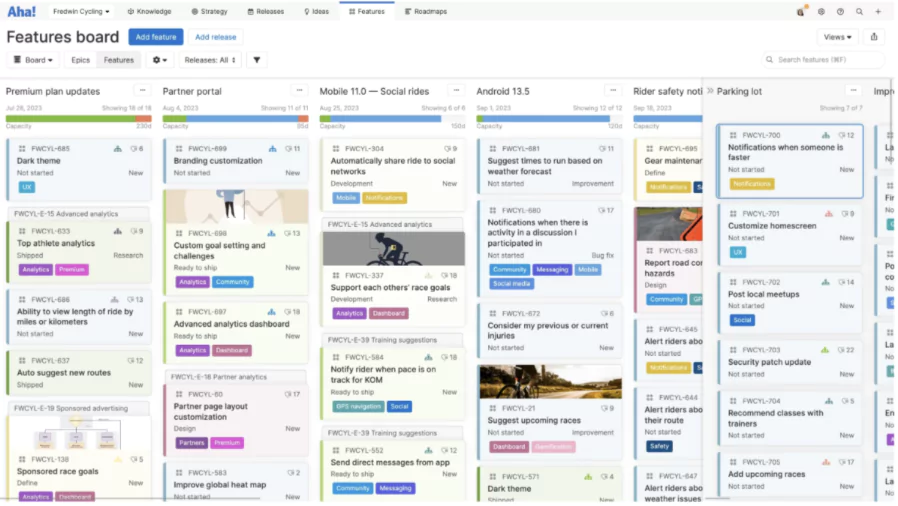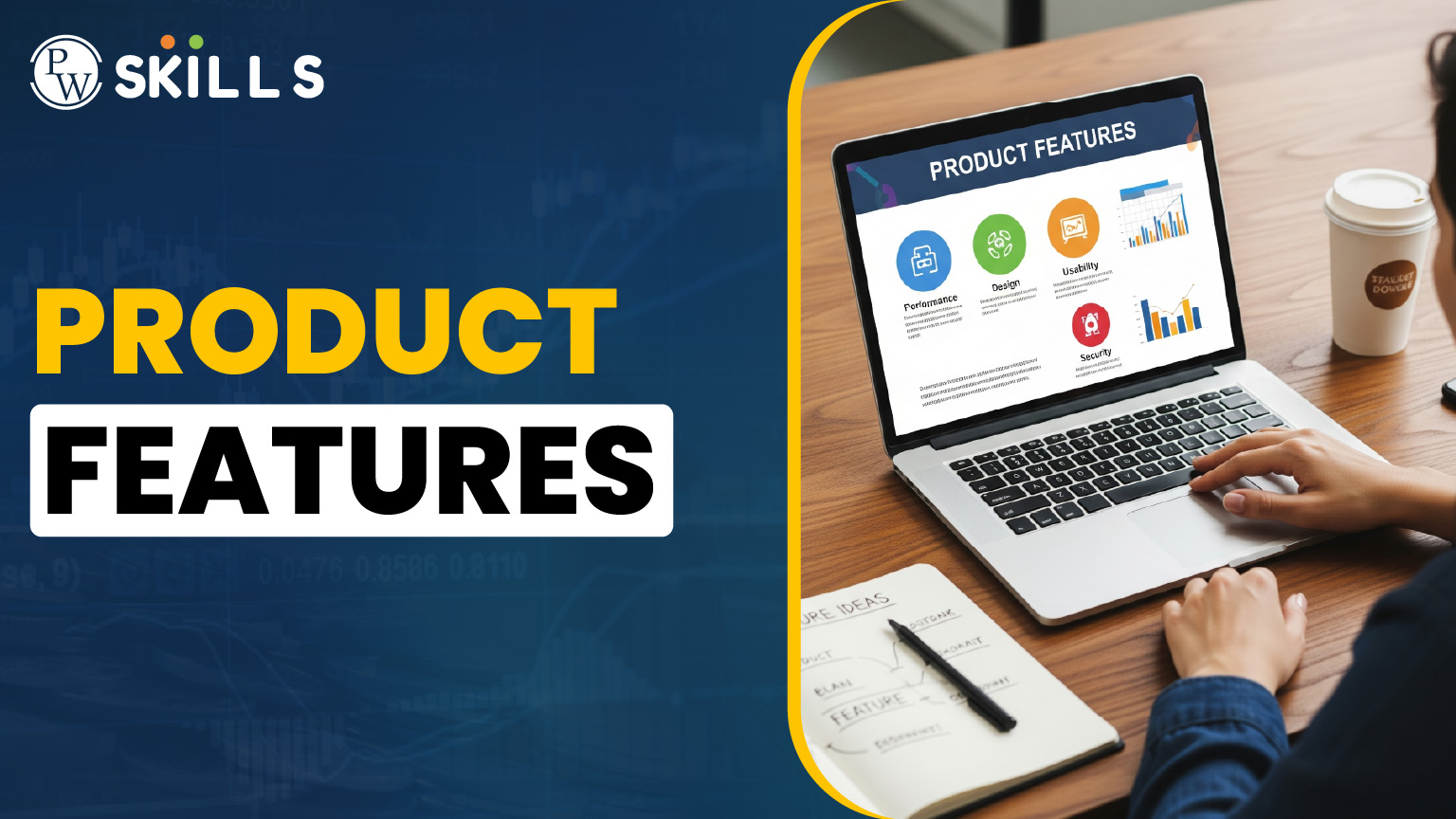When you are building a successful product, it is important to have a clear understanding and familiarity with the product features. Product features are the key functions or qualities that provide real value to users and set your product apart in the market. The right features can boost user satisfaction, drive engagement, and support your business goals.
In this guide, we’ll break down what a product feature is, why it matters, and how to define, prioritise, and manage features effectively. You’ll also find helpful tips, templates, and real-world examples to help you build features for your customers.
What is a Product Feature?
A product feature is a special function or quality that makes a product more useful or valuable. It can be anything from how the product works, looks, or performs. Product managers decide which features are important and should be worked on first.
Each feature should help solve a real customer problem or make their experience better. If a feature doesn’t do that, it’s probably not worth building.
Sometimes, the best features are not the flashiest ones. It’s easy to get excited about cool new ideas, but what really matters is what your customers need. In fact, adding too many features can make a product confusing or harder to use. So, it’s better to focus on fewer features that truly add value rather than packing in too much.

When deciding which features to build, tough choices have to be made. Some ideas might seem exciting and popular, but if they take too much time or resources, they might not be worth it. Other ideas may also be left out if they don’t match the goals of the company or product.
That’s why choosing and prioritising features is such an important part of a product manager’s job. It takes clear focus on the product’s vision, understanding what customers really need, and working closely with different teams. The goal is to filter out distractions and choose features that people will use and enjoy.
Read More: Product positioning: Tips, templates, and examples
Why Are Product Features Important?
Product features are important because they give customers the tools and value they need to get things done. They help your product stand out from others in the market by offering something unique. This makes your product more attractive, keeps customers coming back, and helps grow your business.

Features also encourage innovation. By adding new and useful features, companies can stay ahead of the competition and keep up with market changes. This might mean using the latest technology or creating smart solutions that meet customer needs better than other products.
How to Represent Product Features? Solution Or Needs
The product features depend on what you need to deliver to your customers. Sometimes when you know what to deliver to the customers with the things they need help with based on their personal preference then the product feature comes as a “Solution”. You might be adding features due to a large number of requests from your consumers or you might do it to fill the gaps of competitors.
When you generate product features as a solution you and your team have a shared understanding of what the end product is going to be. But it might limit you and your team to a specific solution. On the other hand when you express features as needed you have to identify what you need to accomplish instead of describing the features as a solution. Options are kept open when expressing features as a need.
You get more chances for implementing innovative solutions and the team participates more as they can also have a say in product features.
How to Successfully Add New Product Features?
Adding new features to your product is a big part of keeping it useful and competitive. Here’s a simple step-by-step guide to help you move product feature additions forward:
1. Know Your Target Audience
Before you add any new feature, first understand who your users are and what they need. Do market research, study your users’ feedback, and analyze what your competitors are offering.
This helps you find out which features will truly help your users and where your product can stand out in the market.
2. Prioritise the Right Features
Once you have a list of possible features, sort them by importance. Ask yourself: Which features are necessary for the product’s success? Which ones are just nice to have?
Look at things like customer demand, business goals, technical challenges, and market trends. Use a product backlog to organise these ideas so your team can focus on building and launching the most valuable features first.
3. Use User Stories
User Stories are simple, short descriptions that explain what a user wants to do with your product, why they want to do it, and how it will help them. For example: “As a user, I want to filter search results so I can find what I need faster.” Writing user stories helps your team stay focused on user needs and improves communication across the team and with stakeholders.
4. Communicate Clearly and Often
Good communication is key to adding features successfully. Your team needs to work closely together to make sure the new features match user needs, support the product’s vision, and align with company goals. Regular updates through meetings, emails, or reports help keep everyone in the loop and avoid misunderstandings.
5. Test, Learn, and Improve
Adding features isn’t a one-time task. It’s a continuous process. Once new features are live, test them to make sure they work well and actually help users. Collect feedback, try different versions if needed, and keep improving. Testing and regular updates help your product stay useful and user-friendly.
Product Feature Template
Using a product feature template can save your team time and keep everyone on the same page. It helps you clearly define each feature and gives your team all the important details they need to get started.
You can begin by using a simple feature requirement template, like a whiteboard version that includes key points such as the feature’s goal, user needs, and expected results.
If you want to track your features from start to finish, tools like Aha! Roadmaps and Aha! Developing can help. They offer an all-in-one system for planning, building, and managing product features in one place.

Product Feature Example
Product features help show exactly how a product works and what value it brings to users. For example, here’s a feature called “Support each other’s race goals” from a cycling app. This feature was created using a product feature template in Aha! Roadmaps. It includes all the key details, how the feature works, how it helps users, and how it supports the company’s goals.
On the right side of the template, you’ll find extra information like the feature’s current status, who is working on it, which user types (personas) it supports, and the main goals it helps achieve.
Does it seem like a lot of information for just one feature?
Maybe but all these details help top product managers stay organized. It ensures every feature connects back to the product’s overall strategy and makes sure nothing important is missed during development.

Most product managers work on many features at the same time. That’s why it’s helpful to use a tool that shows all ongoing features in one clear view.
For example, the image below shows a features board. Each card on the board represents a feature that the product manager has planned and grouped into a release. Features like “Marketplace integration” and “Custom branding” are placed together because they both improve the partner portal.
This kind of visual tool makes it easier to stay organised and keep track of what’s being built and when it will be released.

How to Define Product Features?
Defining product features is a key part of building successful, user-friendly products. But before writing a feature, you need a solid idea, and those ideas can come from anywhere: your team, customers, stakeholders, or even your own observations. However, not every idea should turn into a feature.
As a product manager, your job is to collect, review, and prioritise ideas to find the ones with the biggest impact. This process is called idea management, and it’s the first step before defining any new feature. Since it’s not realistic to build every suggestion, you need to focus on the ideas that best support your product goals and solve real user problems.
Read More: What Is a Product Team? Functionality, Responsibilities
What Does It Mean to Define a Product Feature?
Defining a product feature means clearly explaining what the feature does, why it’s needed, and how it helps users. A well-defined feature provides enough detail for the whole product team, from developers to marketers, to stay aligned and move forward with confidence.
- For engineers, it explains the functionality and gives context to guide development decisions.
- For marketing teams, it highlights user benefits that can be promoted in the go-to-market strategy.
Questions to Ask When Defining a Product Feature
To make sure your product feature is well thought out, answer these key questions:
- How does this feature support our business goals or product strategy?
- What specific problem does it solve for the user?
- What new capabilities or user experiences need to be built?
- What is the timeline for delivering this feature?
- Which user group or customer segment will benefit from this feature?
- Who will be responsible for building and launching it?
By clearly defining each product feature, you ensure that your team builds with purpose, solving real problems, delivering value to users, and staying aligned with your product vision.
Also Read:
- Product Development Strategy: How To Create A Winning Strategy
- Product positioning: Tips, templates, and examples
- Product Vision: How To Define Yours In 4 Steps?
- What is a Product Launch? Product Management Glossary
Gain Complete Product Management Skills with PW Skills
Become a successful product manager and discover a wide range of career opportunities in product marketing. Enrol in our Product Marketing Course providing you the productivity of generative ai to boost your productivity by a significant margin.
Get industry ready skills with hands on learning throughout the course duration. Our team will also help you prepare for your interviews and give you complete career support. Get industry recognised certifications and discover a wide range of opportunities in Product management only at pwskills.com
Product Feature FAQs
Q1. What is a product feature?
Ans: A product feature is a function or quality in a product that helps users do something or adds value. It can be about how it works, looks, or performs.
Q2. Why are product features important?
Ans: Features make your product useful and different from others. They help users, attract customers, and support business growth.
Q3. Who decides what features to build?
Ans: Product managers work with teams and customers to choose the most important and helpful features to build.
Q4. How do I know which features to build first?
Ans: You can use customer feedback, market trends, business goals, and technical limits to decide which features matter most.
Q5. What is a product feature template?
Ans: It’s a document or tool that helps you describe a feature clearly, what it does, why it matters, and how it should be built.

